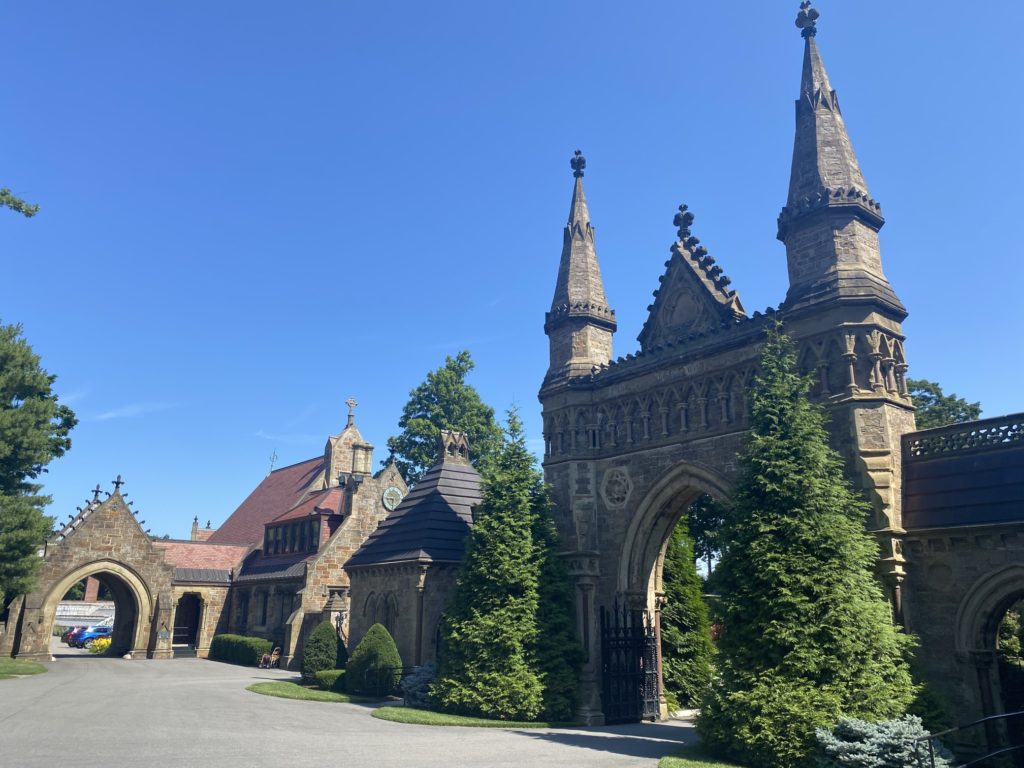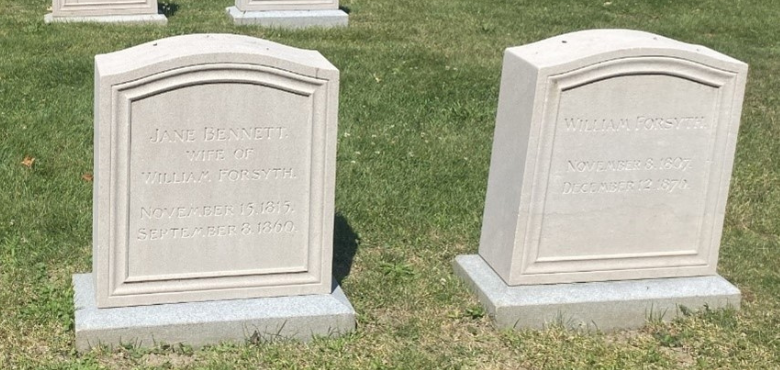By Jill Sirko and Jessica Weinstein
Forsyth Officers Visit Forsyth Family Burial Site
Since our founding by the Forsyth Family in 1910, the institute has run as a not-for-profit charity. Like any other not-for-profit corporation, Forsyth operates by a set of internal Bylaws – a roadmap for Directors and Officers to run the organization. Following a thorough outline of logistical information and fiscal duties, a somewhat unique provision appears:
It shall be the duty of the [Officers] to annually visit the family burial lot of the Forsyth family in Forest Hills Cemetery, which is the burial lot of those in whose memory and by whom the Corporation was established. At such annual visits…they shall observe the condition of the burial lot, superintend the care and maintenance thereof, and generally exercise the authority with regard to the care of the same.
In years past, designated members of Forsyth management have typically taken turns fulfilling this obligation individually or in pairs. Occasionally a larger group visit would be organized, with an invitation extended to the greater Forsyth community. After the last few years of remote work and social distancing, we felt it would be a wonderful opportunity to reinstate the latter.

In honor of this responsibility and tradition we visited Forest Hills Cemetery. Several members of Forsyth’s executive team attended this visit, including Dr. Thomas Van Dyke, Vice President of Clinical and Translational Research; Sok Cheng Soh, CFO; Dr. Wenyuan Shi, CEO; Carline Durocher, General Counsel and Vice President of Technology Development; and the Chair of the Board of Directors, Elyse Cherry.
The visit could not have occurred on a more beautiful day – clear, sunny and 70 degrees, with a slight breeze occasionally rustling the leaves as we walked. It is a beautiful cemetery, with trees that are hundreds of years old. They are huge. And beneath them, large violet lace cap hydrangeas were in full bloom.
The Forest Hills Cemetery holds special significance for the Forsyth family. The chapel, which they commissioned, is called the “Forsyth Chapel.”

By honoring our history in this way, we help maintain the unique character of this Institute as we continue to promote oral public health through innovative research and care.

The family site, where they lay, is a corner plot. Marble tombstones encircle a large bronze statue with the name “Forsyth” etched across the front.

Our small group gathered around the graves, reading through the tombstones and paying respect to the founders of the Forsyth Institute. The tombstones of four Forsyth brothers – two married, two not – stand side-by-side with their parents, William and Jane Forsyth.

There is a sister, who died at the age of 44. There is also a stone recognizing the lives of two Forsyth children who didn’t make it past the age of 5. There were 7 siblings in total, yet not a single one themselves had children. We wondered at this lack of children, given their parents had so many. Forsyth, perhaps, is only here today because they were childless and used some of their vast wealth, gained through their rubber factory, to found Forsyth.
The tall bronze statue extending up out of the white stone is the work of the sculptor, Lee Lawrie, who famously also did “Atlas,” a bronze sculpture at the Rockefeller Center in New York City. He also carved the four statues of the Forsyth brothers currently on display in the lobby of the administration offices of the Forsyth Institute.

